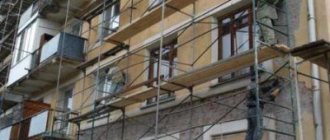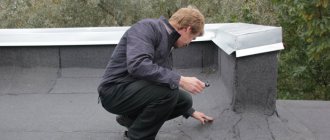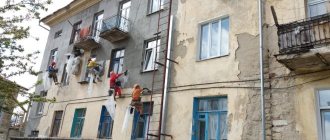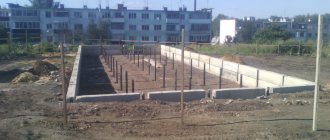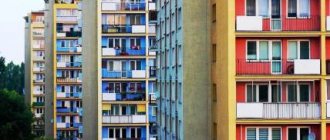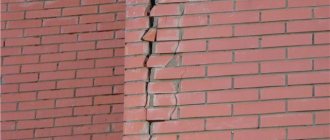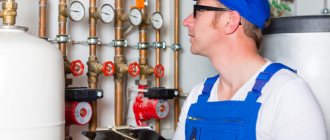Evgeniy Belyaev, General Director of RADEX Management Company, answers:
Russian legislation imposes fairly strict requirements on the condition of the common property of an apartment building. These include sanitary and epidemiological standards, technical regulation standards, and the law on the protection of consumer rights. The main criteria are that living in a house for residents must be reliable and safe for life and health. These requirements are spelled out in the Russian Federation Regulations dated August 13, 2006 N 491 “On approval of the Rules for the maintenance of common property in an apartment building.” The task of the management company (if a form of management through a management company is chosen in the building) is to monitor the condition of the common property of the apartment building and ensure that it complies with the requirements of the laws of the Russian Federation.
We can say that in an apartment building something is constantly being repaired and restored, because an apartment building is a large single mechanism; Something can break down in it at any moment: a tile on the floor of the transition balcony fell off, someone (accidentally) damaged the slope on the entrance door, someone stained the wall, not to mention deliberate cases of sabotage. Therefore, restoration work in the apartment building is ongoing.
As for current repairs, the decision on it is made on the basis of inspections of the general property of the house. Inspections can be ongoing, seasonal (in the spring, at the end of the heating season, and in the fall, in preparation for the new heating season) and extraordinary (usually after accidents, emergencies). Carrying out inspections, management company employees assess the condition of the common property of the house. They include all comments in a special act. And on the basis of this act, a decision is made whether current repairs are needed or not, that is, whether the condition of the common property meets safety requirements or not.
As for the list of works on current repairs, it is prescribed in the normative act of the State Construction Committee, which is called “Methodological manual for the maintenance and repair of housing stock. MDK 2-04.2004”, Appendix 2. The list is quite large, it contains 15 points, each of which has up to a dozen sub-points.
What is the difference between a management company and a service company?
How to bring the management company to its senses?
Current repairs of the facade of an apartment building
The facades of apartment buildings require regular maintenance, which includes the entire range of work: cleaning with chemicals, washing, repairing gutters, cornices, etc. Don’t forget about emergency situations that require immediate repairs to the façade of an apartment building. Such cases include partial collapse of the facade or plaster, which can pose a danger to human health.
Most apartment buildings in Russia were built several decades ago, but the market for finishing materials does not stand still and in order to restore decorative elements or plaster of the facade of old houses it is necessary to use materials that will be compatible with those on the facade, this will help avoid cracking of the new plaster layer.
Inspection
Work begins with a preliminary inspection and identification of possible problems; tapping is performed next to peeling areas of plaster, this helps to detect peeling areas invisible to the eye.
Preparatory stages
The walls are cleaned of the old layer of plaster, the integrity of the foundation is inspected, if the base has deep cracks and mechanical damage, they are repaired and sealed. Before applying a new plaster layer, notches are applied to the prepared surface, the walls are coated with a primer, these types of work help to ensure better adhesion of materials to the surface.
Applying a plaster layer
When carrying out puttying and applying a plaster layer, it is mandatory to comply with all construction standards for working with these materials. The putty must be completely dry, one plaster layer should not exceed 2 cm.
Elena Krivonosova, a lawyer at the legal service “Unified Defense Center” (edin.center), answers:
First of all, what exactly is “home renovation”? This is a certain set of actions, the purpose of which is the normal functioning of the house. And such actions within the framework of ongoing repairs include, for example, maintaining or improving the condition of the foundation, facades, walls; work to maintain the condition of the roof and its covering; repair or replacement of drain pipes, house coverings; including landscaping of the local area and yard. This, of course, is not all types of work related to current repairs, but the main ones. And the entire list, agreed upon with the owners of the house, must be specified in the agreement with your management company (accordingly, according to it, you can monitor the management company’s fulfillment of its obligations).
Absolutely every owner of an apartment in an apartment building has the right to become familiar with the routine repair plan, which the management company is obliged to draw up annually. As a general rule and from the point of view of common sense, routine repairs should be carried out at least once every 3-5 years, unless there is an additional need, for example, the roof or pipes are leaky.
List of works included in the overhaul
Due to monthly financial savings accumulated from contributions from residents of apartment buildings, it is possible to carry out a fairly impressive list of repair, restoration and installation work, which is considered a major overhaul.
As stated in the legislation, a major overhaul of a house involves the implementation of work regulated by the legislator to eliminate various faults and worn-out structural elements in the house, classified as common property, including various works on restoration, replacement of structures and systems of the house to improve the operational properties of the common property of housing rights holders in an apartment building .
One of the basic directions when carrying out major home repairs is the repair of walls and facades, which allows:
- repair and insulate house facades and plinths;
- repair and, if necessary, glaze balconies and loggias;
- change window and balcony fillings to more soundproofing options;
- replace or repair gutters;
- repair house fire escapes;
- change or repair the roofing of a house;
- arrange canopies over loggias, balconies, entrances to entrances, basements;
- repair the blind area;
- repair the external walls of common building elevator shafts.
The next important direction in the field of overhaul work is the restoration of the proper condition of the basements and foundation of an apartment building. For these purposes, the following work can be carried out, financed, among other things, from mandatory regular contributions from apartment owners:
- house foundation repair;
- antiseptic treatment of structural elements of multi-apartment buildings;
- repair of entrances to basement premises;
- sealing places where there is an intersection of engineering systems with a foundation element, etc.
In addition to the listed work, capital repair funds can finance repair work related to restoring the proper condition of attics and roofs, namely:
- replacement, repair of attics and roofs, their fire protection treatment;
- treatment of wooden structures with antiseptics;
- repair or replacement of pallets;
- normalization, restoration of temperature and (or) humidity conditions;
- sealing, repair work for repairing air ducts, flues and other similar systems;
- replacement and repair of parapet gratings;
- work on replacement, repair of internal drainage elements, etc.
During major repair work, restoration of staircase structures can also be carried out with the replacement of steps, fences of house landings and other work.
Quite a significant part of the repair work performed during home overhauls is associated with restoring the condition and improving the entrance areas and door fillings. The considered category of work financed from capital repair funds includes the following activities:
- change and repair of access lighting;
- replacement and repair of access entrance doors;
- work on changing and repairing doors in garbage chambers;
- strengthening, restoration, partial replacement of stair steps, repair of the entrance platform, etc.
Major repairs include replacement, restoration, and improvement of in-house engineering systems in apartment buildings. With the help of capital repairs you can:
1. Repair central heating:
- replace and repair risers, house pipelines, connections to public heating systems;
- install shut-off valves;
- install heating devices with attached and built-in thermostats with automatic mechanisms;
- replace or repair thermal curtains;
- reconstruct panel control systems;
- establish the functioning of heating systems;
- install automatic balancing valves on heating structures, etc.
2. Repair and improve the ventilation systems of the house:
- change ventilation grilles;
- clean ventilation systems, etc.;
3. Ensure the organization of hot and cold water supply systems:
- change and repair pipelines if they belong to common house systems;
- install shut-off valves;
- change the pipe layout;
- install meters, etc.
4. Carry out repair work on home sewerage and drainage systems.
5. Repair other systems in the house (internal gas supply, electrical equipment, fire protection systems).
Major repairs may also include work to restore the functions and improve garbage chutes, elevators, including ensuring the accessibility of public elevators for the disabled, as well as interior home decoration (when the appearance of the decoration was damaged due to repair work on the house) and landscaping of the yard.
Thus, the overhaul includes a fairly extensive list of repair work related to the improvement of the common living space. Thanks to the accumulation of financial contributions from Russian citizens in the fund for major repairs, over time it is expected to significantly improve the housing stock in most Russian regions.
Accordingly, paying fees, perceived by many Russians as just another “extortion” from public utilities, also has its positive aspects. In addition, citizens in this situation have no choice: paying mandatory contributions for major repairs is the responsibility of all owners of apartments in an apartment building. The legislator provides only 2 exceptions:
- If housing, in particular, a house, is recognized as unsafe and subject to demolition;
- If the land under the house is required for municipal needs.
Details about calculating land tax
Procedure for drawing up a land plot plan
Buying an apartment encumbered with a mortgage
Disputes with neighbors during land surveying
Apartment rental agreement form, sample, tips for drafting
Rules for living in an apartment building: basic provisions
Nino Gulbani, a lawyer at the Homeapp technology agency, answers:
The list of works related to current repairs is quite extensive. It is given in the Decree of the Government of the Russian Federation dated August 13, 2006 No. 491 “On approval of the Rules for the maintenance of common property in an apartment building...” in Article 10, as well as in Appendix No. 4 of the Decree of the State Construction Committee of the Russian Federation dated September 27, 2003 No. 170 “On approval Rules and norms for the technical operation of the housing stock."
The main part of the activities includes conducting an inspection of a specific object (premises), determining the technical characteristics of the building itself. The result of the inspection is the drawing up of a routine repair plan, which determines the list and types of activities, as well as the scope of work. All residents of a residential building must be informed about the preparation of such a plan. The period for drawing up the plan is 1 month.
There are exceptions in the form of unscheduled repairs that occur in emergency situations or at the individual requests of residents. The deadline for eliminating faults and their various types are contained in Appendix No. 2 of the resolution of the State Construction Committee of the Russian Federation dated September 27, 2003 No. 170.
How to find out if a house has undergone major renovations?
How to prove that the Capital Repair Fund does not fulfill its obligations?
Rules and SNiPs for facade repair work
Construction standards and operational rules for the facades of houses and structures are regulated in construction SNIPAKH. According to which, the turnaround time for routine façade repairs is five years, and for major repairs, ten years. Based on regulatory data, facade maintenance includes:
- Inspection of facade structures and identification of damage for the purpose of their further elimination
- Seasonal facade work (cleaning the facade, knocking down icicles, washing windows)
- Hydrophobization of the facade (elimination of efflorescence)
In megacities, the air and road surfaces contain a large amount of chemicals, which accumulate over time as a result of constant interaction with reagents, which also negatively affects the external condition of the facade. Washing of facades is carried out no more than once a year, as a rule, after carrying out this work, cracks, chips and other defects of facade structures are clearly visible.
To extend the operational characteristics and maintain the external attractiveness of the building, ongoing façade repair work is being carried out.
Who should manage the update program?
The performer of major repairs of the facade of houses is a company called a regional operator or contractor. According to the Housing Code and Federal Law dated July 21, 2014 No. 255, a non-profit organization is recognized as such, accredited to carry out the appropriate set of measures and possessing the necessary permits and licenses.
Regional operator firms are created by local government authorities as part of a program for major renovation of residential complexes.
The contractor is chosen by residents at a house meeting by voting . The details of the selected company are recorded in the protocol. And the document is sent to the management company.
